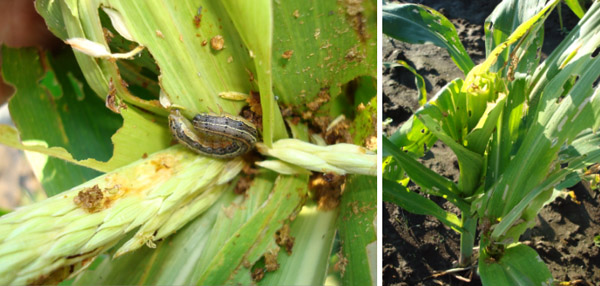Armyworms come in a wide range of colors and sizes. A few of the prominent species living in Florida are beet, southern, and fall armyworms. And the term “living” is not an exaggeration, because Florida is one of the lucky states where it is warm enough for armyworms to overwinter. They are the snowbirds that never leave!

Armyworms are notorious for unanticipated invasions. They feed on most turfgrass species and most vegetable crops, but they prefer grassy vegetable crops such as corn. Armyworms feed in large groups and their feeding has been described as “ground moving” in lawns. They feed during cooler times of the day (morning and evening) and they roll up and rest under the vegetative canopy (in the thatch layer in turf and in the base of leaves in vegetables) during the heat of the day.
Armyworms are difficult to control because of their spontaneity. However, in the lawn they hide in the thatch during the heat of the day. Over watering and fertilization can increase the amount of thatch. It is important to follow UF/IFAS guidelines for home lawn management. A good weed control program can also help to deter armyworms, because weeds serve as an alternate food source.
Numerous chemical control options are available, but softer chemicals such as horticultural oils and insecticides containing the bacteria Bacillus thuringiensis are recommended as a first line of defense. Insecticides should be applied in the morning or evening during feeding time. For additional control strategies and basic information please visit the UF/IFAS Armyworm Publication Page.

 0
0
